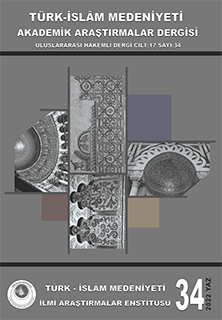Germany in the Cold War: The Efforts Directed to Reunification of The Divided Germany
Keywords:
Cold War, Federal Republic of Germany, East Germany, Berlin Wall, German Indivisible UnityAbstract
The aim to be a world state of Germany that secured the political association in the last quarter of the century XIX became an important factor among the developments leading to the First World War. Although Germany was among the loser states of the war, disregarding of the Versailles Principles accelerated the course towards the Second World War. While it was thought to develop the interests of Germany in the two great world wars, Germany sustained a great defeat in both wars. However, the Allies became successful in weakening Germany. Especially the developments at the end of the Second World War leaded to the division, a big catastrophe for the German folk. Germany was put in the center of the bipolar political dissidence called as the Cold War and was divided into the West and the East. The division did not remain limited the country, the city Berlin was also divided into the East Berlin and the West Berlin. The reunification of the Federal Germany inclined to the West and the East Germany dependent to the Soviet was achieved with the fall of the Berlin wall in 1989
References
Resmi Yayınlar (Başbakanlık Cumhuriyet Arşivi):
BCA, 030.01.5.28.14.
BCA, 030.01.8.44.6.
BCA., 030.01.41.246.16.
BCA, 030.01.7.36.15.
BCA, 030.01.63.392.16.
BCA, 030.01.7.43.13.
BCA, 030.01.6.34.13.
Telif Eserler:
ARAS, T., R., 1968, “Görüşlerim”, İstanbul.
ARMAOĞLU, F., 1993, “20. Yüzyıl Siyasi Tarihi 1914- 1990”, C: I, Ankara.
DOĞAN, N., 2011, “Almanya’nın Avrupa’daki Konumuna Teorik Yaklaşımlar: Almanya’nın Yeniden Birleşmesinden 20 Yıl Sonra Bir Değerlendirme”, Çankırı Karatekin Üniversitesi İktisadi ve İdari Bilimler Fakültesi, C: I, Sayı: 1, Güz.
ERKİN, F. C., 1987, “Dışişlerinde 34 Yıl Anılar- Yorumlar”, C: I, Ankara.
----------, 1992, “Dışişlerinde 34 Yıl Vaşington Büyükelçiliği”, C: II, Kısım: I, Ankara.
----------, 1999, “Dışişlerinde 34 Yıl Vaşington Büyükelçiliği”, C: II, Kısım: II, Ankara.
GÖKTEPE, C., SEYDİ, S., 2015, “Soğuk Savaş Başlangıcında Türk Dış Politikası”, Bilig, Sayı: 72, Kış.
GÜLMEZ, N., TAHANCI, B., 2014, “Soğuk Savaş Dönemi Çekişmelerinden Bir Örnek: U-2 Uçak Krizi”, Çağdaş Türkiye Tarihi Araştırmaları Dergisi, C: XIV, Sayı: 28, Bahar.
GÜRÜN, K., 2010, “Türk- Sovyet İlişkileri (1920- 1953)”, Ankara.
İNAT, K., 2009, “Birleşme Sonrasında Almanya’nın Dış Politikası: ‘Normalleşme’nin Son Adımları”, Bilgi, Sayı: 18.
İNCE, E., 2008, “1929 Dünya Ekonomik Buhranının KANTARCI, Ş., 2012, “Soğuk Savaş Sonrası Uluslararası Sistem: ‘Yeni Sürecin Adı Koalisyonlar Dönemi mi?’”, Güvenlik Stratejileri, Yıl: 8, Sayı: 16.
KISSINGER, H., 2002, “Amerika’nın Dış Politikaya İhtiyacı Var Mı?”, Çev. Tayfun Evyapan, Ankara 2002.
KOÇAK, C., 1991, “Türk- Alman İlişkileri (1923- 1939)”, Ankara.
Mareşal Foş, 1939, “1914- 1918 Harbinin Tarihine Yarayacak Hatıralar”, Çev. Hüseyin Rahmi, C: I- II, İstanbul.
SAKLI, A. R., 2012, "Fransa ve Almanya'da Uluslaşma Süreci ve Ulus Bilincinin Oluşumu", Akademik Bakış Dergisi, Sayı: 32, Eylül- Ekim.
SEZER, D. B., 1999, “Soğuk Savaş Dönemi ve Türkiye’nin İttifaklar Politikası”, Çağdaş Türk Diplomasisi: 200 Yıllık Süreç, Ankara.
SOYSAL, İ., 2000, “Türkiye’nin Siyasal Andlaşmaları (1920-1945)”, C: I, Ankara
Almanya’daki Etkisi ve Bu Etkinin İzmir Finans Piyasasına Yansıması ‘Deutsche Orient Bank’”, ÇTTAD, C: VII, Sayı: 16-17, Bahar- Güz.
Downloads
Published
How to Cite
Issue
Section
License

This work is licensed under a Creative Commons Attribution-NonCommercial 4.0 International License.







